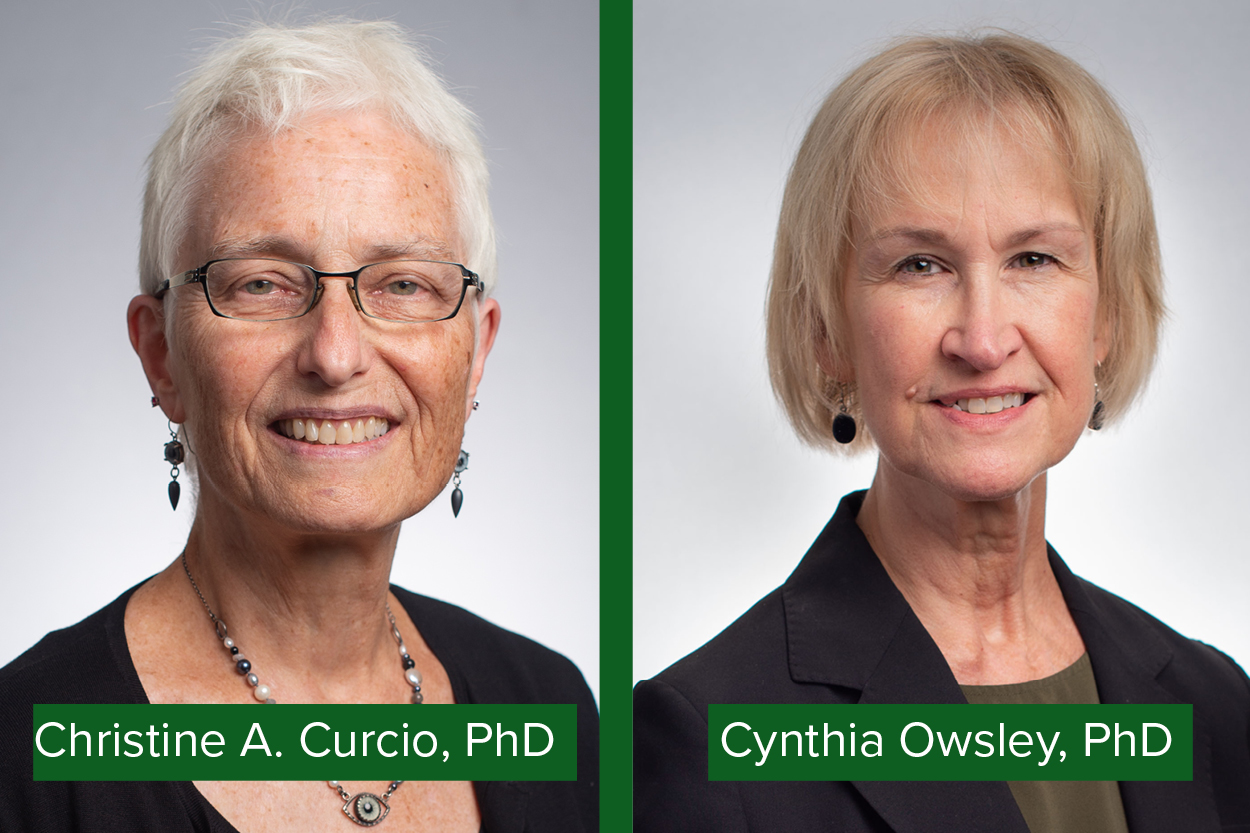 Christine A. Curcio, Ph.D., the White-McKee Endowed Professor of Ophthalmology at the University of Alabama at Birmingham Department of Ophthalmology and Visual Sciences, and Cynthia Owsley, Ph.D., MSPH, the Nathan E. Miles Chair of Ophthalmology, participated in the Classification of Atrophy working group in Baden-Baden, Germany on September 19, 2019.
Christine A. Curcio, Ph.D., the White-McKee Endowed Professor of Ophthalmology at the University of Alabama at Birmingham Department of Ophthalmology and Visual Sciences, and Cynthia Owsley, Ph.D., MSPH, the Nathan E. Miles Chair of Ophthalmology, participated in the Classification of Atrophy working group in Baden-Baden, Germany on September 19, 2019.
Age-related macular degeneration (AMD) is a major cause of irreversible central vision loss in older persons worldwide. Although neovascular (“wet”) AMD is now successfully treated, the majority of patients have an underlying degeneration that is not yet treatable.
Preventing advancement to the vision-robbing stage of atrophy requires new interventions that either stop or delay disease progression. Before a new treatment is rolled out to patients, it is first tested and approved in clinical trials. Endpoints are events observed during a trial that monitor the effectiveness of a treatment. Like a finish line that can never be reached, currently approved endpoints for AMD occur after the disease is very advanced, leading to the overall failure of trials. While these barriers impede the development of drugs for treating AMD, a team of expert ophthalmologists from around the world, with a handful of scientists, formed the Classification of Atrophy working group to formulate new endpoints. Four major guideline publications have resulted so far. At this meeting, Curcio presented data from microscopy studies that help ophthalmologists interpret retinal imaging in clinic patients. Owsley discussed the importance and design of visual function tests in AMD trials. The CAM group met in conjunction with the 7th International Symposium on AMD, held every four years by the German National Academy of Ophthalmology. Click here for a dialogue on LinkedIn started by Jordi Monés, M.D., Ph.D., Director of the Barcelona Macula Foundation.